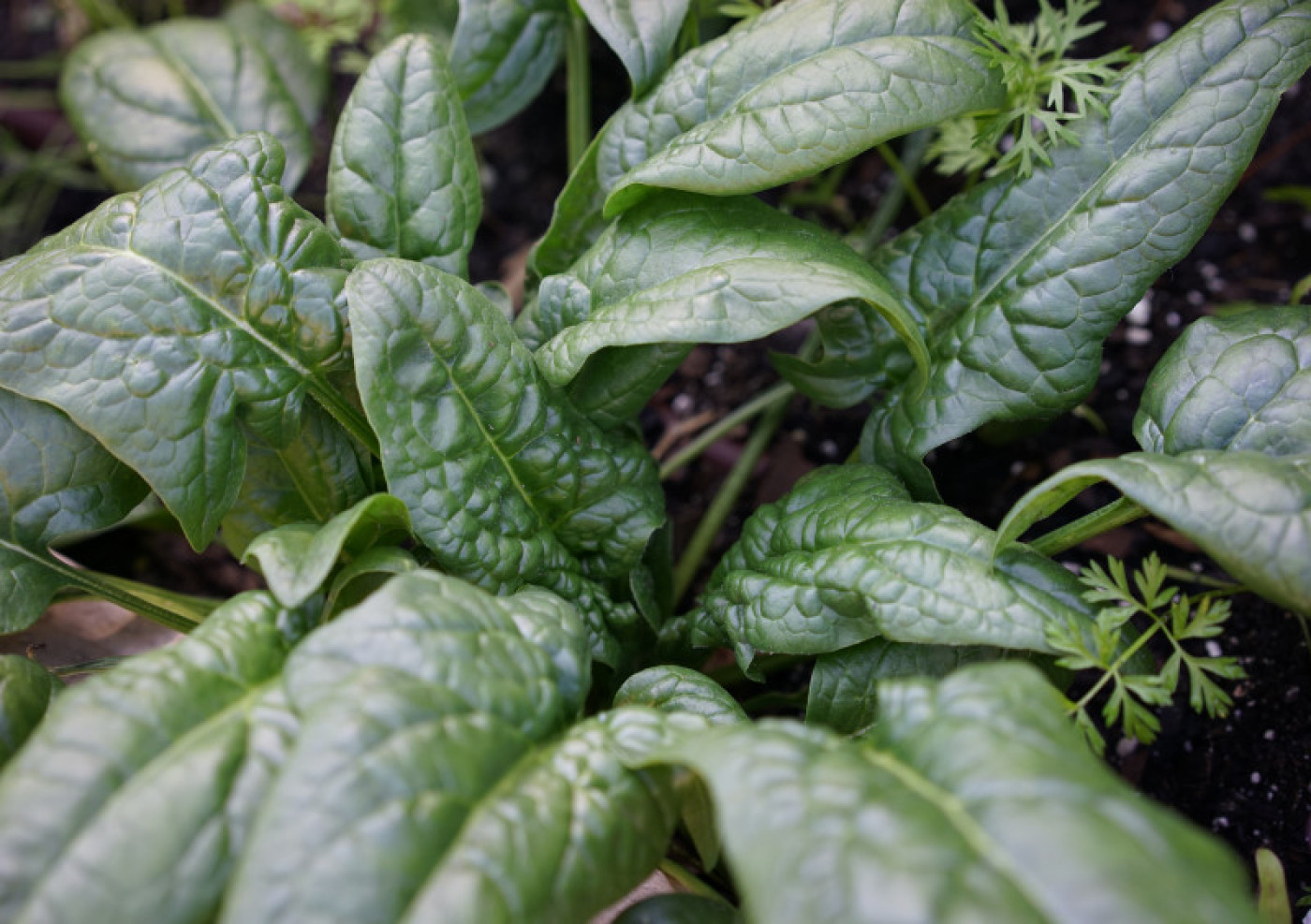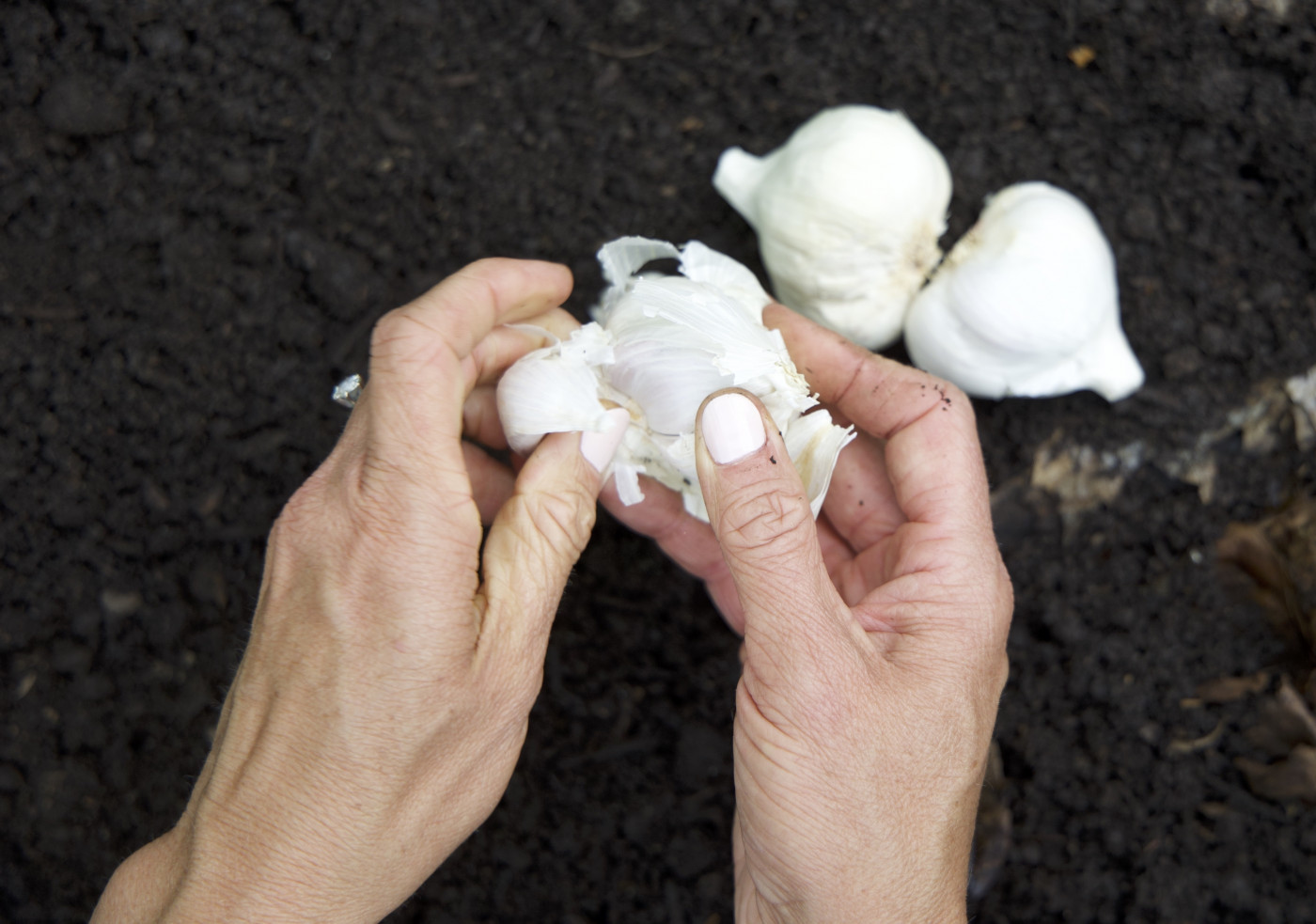It May Be December, But I'm Still Planting
Brrr, it's cold outside... but I'm still gardening. And if your soil is still workable, you can be gardening, too!
First, what does workable soil mean? It means you can dig into the top 3 or 4 inches of your raised beds. Your cold season, if you experience one in your climate, hasn't taken its wintry hold on your garden yet. And that means you can still plant some seeds for cold-hardy plants.
If you live in a warmer climate, these seeds may very well sprout and grow during your winter months. If you're in a colder climate, then these seeds will lie dormant for as long as it's too cold for them to sprout. They'll be the first to pop up as soon as the weather warms in spring.
When I lived in Chicago, one of the things that kept me from getting too bummed out during the darkest period of the year was knowing that I had things just hanging tight in the garden, waiting to grow. Plus, getting these seeds in now means you'll be so far ahead of everyone who waits till March to even think about their garden!
A List of Seeds to Plant in December
Get these seeds (and cloves) planted in the garden this month if the soil in your raised beds is still workable:
- Beets
- Spinach
- Swiss chard
- Cilantro
- Carrots
- Dill
- Parsley
- Broccoli
- Cauliflower
- Cabbage
- Kale
- Radishes
- Chives
- Garlic
- Onions
Again, these seeds will settle into your garden during your cold season and then be ready to grow and flourish the minute your soil warms up in the spring. You'll skip watering them in after planting and leave them to hibernate over winter. The soil will protect them, so there's no need to cover your garden unless you have other things growing there.
Let's look at how you can plant each of these frost-tolerant and frost-resistant plants in December.
Plant Beets, Spinach, & Swiss Chard by Seed in December
These plants come from the Amaranthaceae family. You can plant seeds or even small plants before your wintry weather hits, as long as you have a plan to cover them.
Spinach and Swiss chard grow really well in cold frames or under frost cloth and floating row covers, so make sure to protect any leafy greens you have growing in your garden currently from hard frosts. You might be amazed how far into your colder months you can prolong their growing time. Swiss chard might not grow a whole lot, but it'll shoot up in the spring because its roots will already be nice and established.
Those of you in warmer climates will find that the winter is actually the best time to grow this trio since these plants love temps between 45°F and 75°F. (That pretty much sums up the daily temperature range in my winter garden back in Houston.)
If you miss your winter planting window, you can begin sowing seeds for beets, spinach, and Swiss chard as soon as your soil is workable in the spring; you do not—I repeat, do not—have to wait until your last frost date to plant these frost-tolerant plants.
(Learn more about growing beets, spinach, and Swiss chard.)
Do a December Planting of Cilantro, Carrots, Dill, & Parsley
Cilantro, carrots, dill, and parsley hail from the Apiaceae family. All of these can be planted by seed, not by plant, in your kitchen garden before your cold season arrives. Again, these plants will lie dormant when your beds are covered in inches and inches of snow. Then, they'll grow so much faster in the spring than their newly planted counterparts.
If you have cold frames or mini greenhouses set up, carrots can actually grow slowly under these covers, even in cold climates.
If your soil is already frozen, don't worry. You can begin sowing seeds for these plants again once you're about 6 to 8 weeks away from your last frost date in the spring.
(Learn more about growing your own organic cilantro, carrots, dill, and parsley from seed.)
Brassicas Are Frost-Hardy Plants for December
This next set of plants comes from the Brassica family and includes broccoli, cabbage, cauliflower, kale, and radishes. The winter months are a great time to have these seeds nestled in the garden. You could even grow small kale, broccoli, and cauliflower plants under frost cloth or cold frames to protect them, even in a cold climate. With brassicas, the more savoy (or bumpy) the leaves, the higher that variety's frost tolerance tends to be.
These plants won't die in the cold if they're protected. But they won't grow a lot either. They'll wait until the temps rise in the spring, and then they'll grow so much faster than plants that you put in the garden in March or April because they've already established their roots.
Find more tips and tricks to grow your own broccoli and cauliflower, cabbage, kale, and radishes.)
Learn More About the Different Growing Seasons in Your Garden
Consider this your modern guide to setting up and planting an edible garden that's not only productive, but beautiful, too. Kitchen Garden Revival will forever change the way you think about growing a little bit of your own food.
Plant Garlic, Onions, and Chives Before Your Cold Season
Garlic, onions, and chives from the Amaryllidaceae family will lie dormant through the winter in cold climates and grow very slowly in mild ones if planted by clove before the arrival of cold weather. It might not look like anything's happening in the garden, but their roots will be getting nice and snug underground. As soon as the temperatures slightly warm, you'll see little green shoots popping up in your garden.
For colder areas, look for hard-neck garlic varieties; do soft-neck in the South for best results. Most gardeners get their garlic planted before their first frost, but I've planted mine after and gotten tons of nice, plump bulbs.
If you want to save yourself some pest issues in the spring, go ahead and plant members of this family near your leafy greens. Those oniony and garlicky smells will protect your leaves once everything's up and growing.
Keep Growing in December
These are the main plant groups that you want to have nestled in your garden and ready to start growing as soon as temps rise a bit in the spring. The winter is a time for gardens in cold climates to rest, but that doesn't mean you can't have lots of little seeds protected in the soil to get a head start on your spring growing season. Each of those seeds is a little promise of the life that's waiting to burst open after the harshest days of winter have passed.
Here's to surviving the winter by pushing our growing possibilities to the limit! Thanks for helping to make gardening ordinary again!


Grow More in 2024 Workshop
New Year, new garden! Learn 9 ordinary gardening rules you’ve got to break before you set up your 2024 garden.
Related Reading












